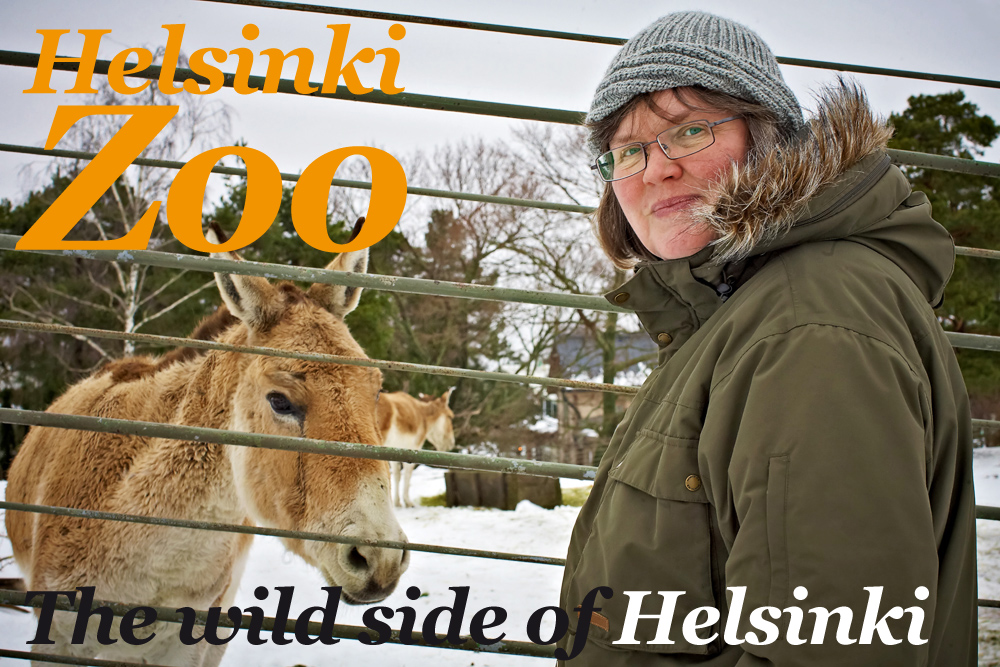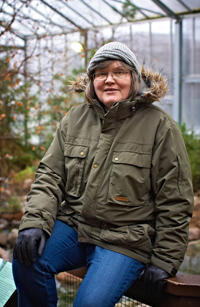
By Johanna Lemola
While serving as an enormously popular leisure destination, Helsinki Zoo carries out an invaluable task in providing a safe haven for endangered species.
The temperature is -10 degrees Celsius on an early-January day, and a biting wind blows from the sea to Helsinki Zoo on the Korkeasaari island. The zoo’s six wisents, also known as European bisons, are oblivious to the conditions.
“The wisents are quite enjoying themselves,” says Kirsi Pynnönen-Oudman, General Curator and the zoo’s animal collection manager. “It’s in hot summer weather when they are uncomfortable.”
Mongolian wild horses, known by the name Przewalski’s horses, casually graze on hay strewn on the frozen, snow-covered ground, and a mare engages in mutual neck scratching with her 14-month-old colt.
Just a short stretch away, an indoor Amazonian forest greets visitors with a tropical temperature and high humidity.
Focusing on northern species, the zoo shows wide variety and remains active all year round.
Endangered species protected
 As the flagship animal of Helsinki Zoo, the Snow Leopard is prominently displayed on the zoo’s banner. The zoo now has six snow leopards, three of them cubs that were born on Midsummer 2012.
As the flagship animal of Helsinki Zoo, the Snow Leopard is prominently displayed on the zoo’s banner. The zoo now has six snow leopards, three of them cubs that were born on Midsummer 2012.
Helsinki Zoo offers a caring home for snow leopards. Over the years, more than one hundred snow leopards have been born in the zoo, most of them to find new homes in other zoos. The natural environment of the Snow Leopard in the mountain ranges of Central Asia is less benevolent to the species, which has been driven by expanding human activity to conditions where its survival is threatened. As a result, the Snow Leopard is protected by the European Endangered Species Programme.
Within that programme, European zoos maintain pedigrees of individuals of endangered species and breed them in a carefully controlled manner according to instructions from a designated international species coordinator. Helsinki Zoo’s former general curator Leif Blomqvist coordinates the Snow Leopard Programme, and the zoo participates in about 20 other programmes.
Owing to the efforts of zoos, many species have been saved from extinction. For example, the last wisent living in the wild was shot in Poland in 1921. However, 50 individuals lived in zoos, which managed to breed the animals so well that the species was reintroduced to its natural habitat in the 1950’s. Przewalski’s horses disappeared from the wild in the late 1960’s, but thanks to zoos about 300 Przewalski’s horses now live in the steppes of China and Mongolia.
The many functions of the zoo
Outdoors Helsinki Zoo may be fairly quiet in the dead of the winter, but behind the doors the staff are busier than ever. “We transfer 50-100 animals in a year, and the winter is a particularly busy time for us,” Pynnönen-Oudman confirms.
Animal exchange is part of the everyday routines of zoos. Today zoos only gain new animals from other zoos, and catching animals from the wild is history. No money ever changes hands.
Helsinki Zoo is fully owned by the City of Helsinki and fulfills important functions of the public sector. One of these functions is a wild animal hospital. The hospital receives 800-900 hurt wild animals in a year and treats the ones that can be saved to be returned to the wild.
Another function is information service. Throughout the day, the zoo’s customer service phones keep ringing with calls from the general public about animals.
Pynnönen-Oudman adds to the list: “We receive a large number of school and daycare groups and so serve an early-education function. But our educational role goes further: In the summer months we can have up to 10,000 visitors per day, and we are Helsinki’s second most popular leisure destination. As such, we reach the widest audience in Helsinki next to TV with messages about animal protection.”
More:
Special focus on Amur Region
Winter fun at Helsinki Zoo
Special focus on Amur Region
 Helsinki Zoo has given a home to Amur leopards since the late 1970’s. The zoo’s current Amur leopards are a female born in a Czech zoo in 2001 and a male born in a Tallinn zoo in 2008, carefully matched by the Amur leopard species coordinator within the European Endangered Species Programme.
Helsinki Zoo has given a home to Amur leopards since the late 1970’s. The zoo’s current Amur leopards are a female born in a Czech zoo in 2001 and a male born in a Tallinn zoo in 2008, carefully matched by the Amur leopard species coordinator within the European Endangered Species Programme.
The couple bears a great responsibility. Only about 35 Amur leopards live in the wild, as a result of a shrunken natural habitat and poaching. Without the gene bank and breeding programme maintained by zoos, the species would have little chance of survival.
Amur tigers – or Siberian tigers – are the world’s largest cats. Their situation is somewhat better than that of Amur leopards, but the species is also endangered with some 350 individuals living in the wild. Helsinki Zoo gives a home to two Amur tigers, a male and a female.
Helsinki Zoo puts a major focus on animal protection in Amur Region. The Amur project of the zoo educates the public about large cats and collects donations to protect them in the wild. With total donations of close to 200,000 euro, the zoo is the biggest international animal-protection agent in Amur.
Amur Region is located in the southeastern part of the Russian Federation and borders China in the south and southwest. The land area of Amur is somewhat bigger than that of Finland.
Photo Mari Lehmonen
Winter fun at Helsinki Zoo
 Helsinki Zoo allows visitors to find out how exciting winter can be at the zoo’s Winter Safari during the two weeks of the Finnish winter school breaks, from 18 February to 3 March. The special Safari programme will take you from one fascinating experience with animals to another.
Helsinki Zoo allows visitors to find out how exciting winter can be at the zoo’s Winter Safari during the two weeks of the Finnish winter school breaks, from 18 February to 3 March. The special Safari programme will take you from one fascinating experience with animals to another.
The animal figures Squirrel and Snow Owl will lead you through the Safari route to learn how animals make it through winter. Many of the zoo’s animal residents are from northern or mountain regions, and they are not scared of the biting winter winds that often blow through the zoo. On the Squirrel and Snow Owl’s route you can meet snow leopards, wisents and many other exciting animals. You can check out when the bears will wake up after having slept through the winter. And don’t miss the animal feedings! To escape from the winter yourself, you can visit the zoo’s tropical animals indoors at Africasia and Amazonia.
Visitors will be greeted by the artwork of the Art Meets Ice sculpting competition held 1-2 weeks earlier. Grills will be hot at the zoo restaurants for hungry visitors to cook sausages, and the restaurants will serve full lunches.
Find out more from Helsinki Zoo at www.korkeasaari.fi
Photo Mari Thorin
